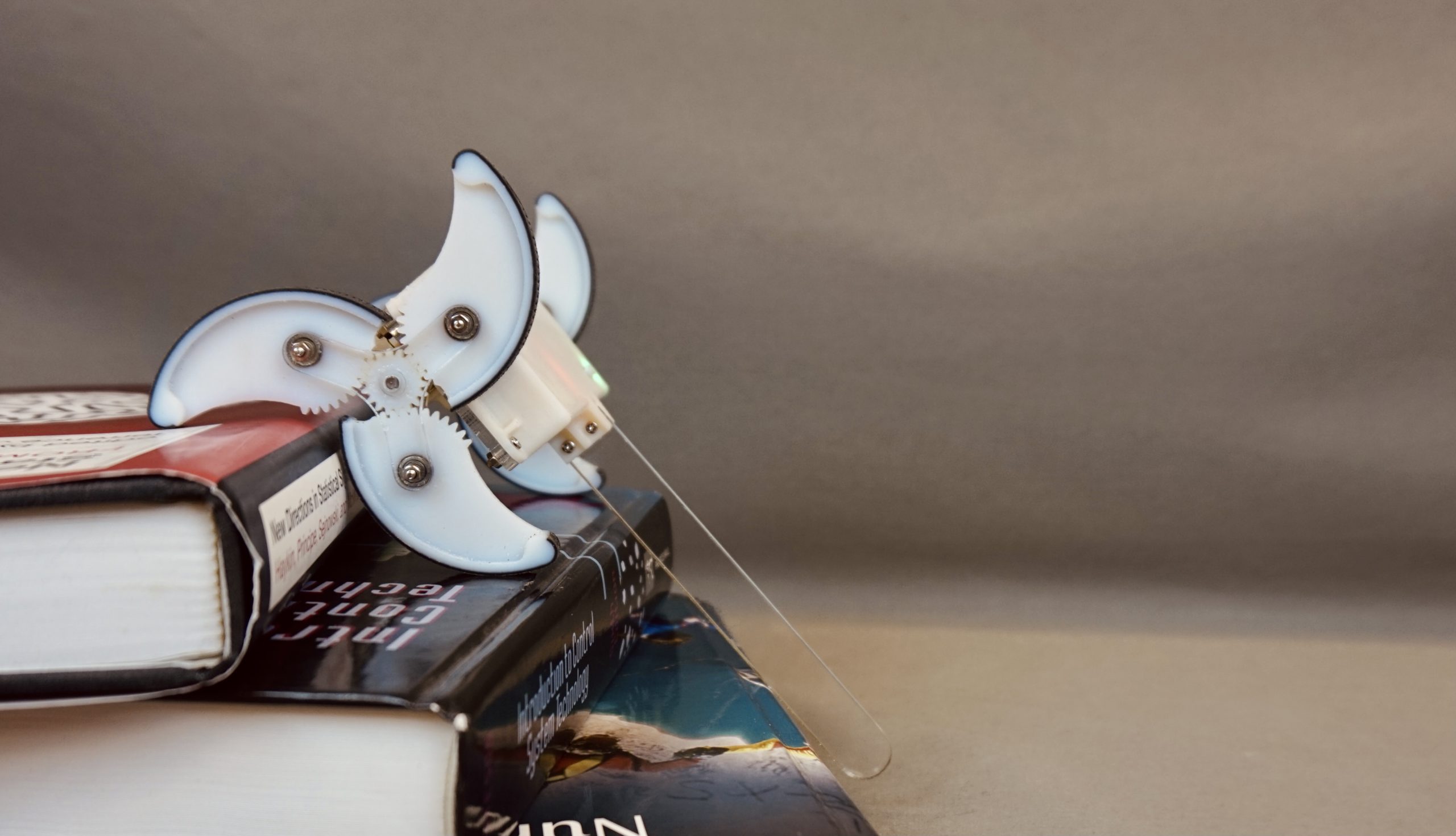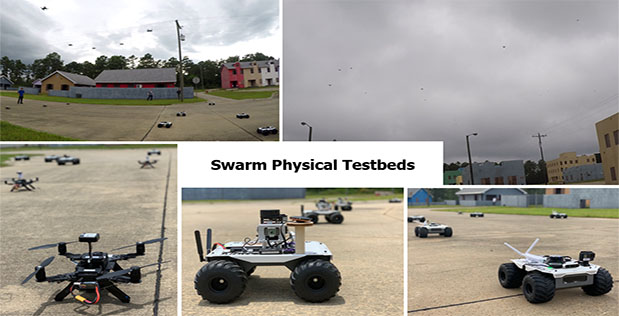Origami + Robotics. 3D-printed TWISTER inspired by an origami design, called TWISTED TOWER by Mihoko Tachibana.
Origami brings novel inspiration and perspective to designing semi-soft robotic mechanisms. Instead of relying on materials deformations to achieve structural compliance as in many soft robots, origami – in particular “action” origami which exhibits kinematic motion – achieves coexisting properties of flexibility and rigidity.
TWISTER: 3D-printable semi-soft robotic mechanism
One particular origami design of our interest is called Twisted Tower by Mihoko Tachibana (See the picture below).

Figure. hand-folded origami twisted tower.
Inspired by the origami twisted tower, we created a new scalable, customizable, and 3D printable mechanism, called TWISTER. The deisgn was diversified to use any regular polygon (e.g., triangle, pentagon, hexagon, etc.) as the base geomtry, carefully converted into a CAD model, and printed using a PolyJet 3D printing machine using a soft material for creases and a hard material for relatively rigid surfaces.
“This origami-bot is a lightweight take on a robot arm.” (MIT Technology Review)
This 3D printed TWISTER and its robot embodiment into a robotic arm has been featured in media, including MIT Technology Review, CNN Technology, 3D Printing Industry, Cleveland.com, and WKSU. The initial phase of this project has been supported by the ACES+ program at Case Western Reserve University and Dr. Lee’s Nord Distinguished Assistant Professorship.
Check out the story behind the creation of TWISTER from CWRU 2018 Annual Report: “Robots, Transformed.”
TWISTER Hand: Underactuated robotic gripper
TWISTER Hand: An underactuated robotic gripper with three TWISTER fingers. This gripper can be attached to a robotic arm for adaptive robotic manipulation.
Our latest work along the TWISTER mechanism features a three-finger robotic gripper. This robotic hand consists of three miniaturized TWISTERs actuated by a single servomotor. Three cables, one for each finger, are simultaneously pulled and released by the pulley inside the chassis which is directly connected to the motor. Passive deformation in flexible fingers allow the gripper to effectively grasp objects in different shape, size, and texture without any sensing (e.g., force-based sensing) typically required for such tasks.
5-min brief intro video of Dr. Lee’s keynote speech on “3D printable soft mechanisms inspired by Origami” at 2020 Ubiquitous Robots Conference on June 22, 2020.


